|
Ah… recall. It’s every dog’s worst nightmare to learn – and that’s because it’s so, so very hard for us! While it’s a tricky thing for us to grasp – and our owners to teach us - it is one of the most important things every dog must learn. Why? Because without it, we could find ourselves in a sticky situation –running up to another dog on the lead that doesn’t like to socialise with his canine peers, leaping out into the road at the thought of what could be on the other-side, worrying livestock when our instincts kick in. I could go on.
Learning a recall is something that protects us from harm and indeed protects others - humans, other animals and wildlife - from the potential mischief that we could cause. Without it, we simply aren’t safe. I’ll be the first to put my hands up here – I struggled to learn it at first. I’m a cockapoo – we’re nosy little poos. We like to go and say hello to everything. I would have never have meant any harm, but I wouldn’t have known the circumstances of the person or other dog I would have bounded up to. My mum, Anna, knew this and so she didn’t take me off the lead until I had learned a solid recall. She knew I would get myself in some sort of pickle if she had – probably something like sniffing the behind of an old dog that wanted nothing to do with me! You see, it’s not enough for you just to think ‘my dog is friendly, he never means harm so therefore it’s okay to take him off and let him bound up to others’. What if the dog he bounds up to is on a lead because he is scared of other dogs and suffers from fear aggression? What if it’s a dog recovering from an operation, what if it’s a young child that they bound into knocking them over? It’s not some kind of dog owner’s law or right to take their dog off the lead. And it is a common misconception that a dog can’t enjoy itself when on the lead. A lead isn’t a restriction, it’s a safety device. Get your dog a nice long lead and a long line for the beach and work on your recall in all situations and scenarios. Teach your dog how amazing it is to be with you on the beach and to come back to you. And then, only when you know they will respond, take them off the lead. Tell them it’s okay to go and play when you do and recall them every now and then – and when you see another dog on the lead, a waddling toddler or an elderly person, call them away. It will take them time to learn so don’t think it will happen overnight – it took me 18 months. This is because running off or chasing something is self-rewarding. You have to make sure that staying with you is more rewarding so take toys as well as tasty treats if you like – sausage is my favourite! When the summer beach restrictions get under-way, we will all be trying to enjoy ourselves in busy, concentrated areas. Please be responsible and considerate of others, that’s all I ask. Murphy
0 Comments
 In 2018, we were asked to write a new column in the Guernsey lifestyle magazine GYone. But this was not to be any ordinary column - it was to be written from a dog's perspective. Murphy has since launched his column and has been hard at work for the last few months, writing about topical issues in the modern dog training world. We've had a lot of positive feedback from readers, who have found that the articles have helped them to understand their dogs better. And therefore we wanted to share Murphy's words of wisdom with you too. So that you can be sure as to who is writing - whether it is Anna or Murphy - we will call his posts as 'Murphy Writes'. Many people think a dog’s life is easy. We eat, we sleep, we play, we walk and then each day that cycle starts all over again. But in truth, our lives aren’t as easy as you think they are. Each of us were bred by humans to do different things, my mother for example is a cocker spaniel, bred to be working all day as a gun dog. Some dogs were selected and bred to guard livestock and homes, some were bred to work all day herding sheep and others were bred to be hunters. Now, people mostly want us to be their companions and conform to their human ways of life and I’ll be honest, this can be quite tough! While indeed some breeds were intended to be companions from the outset, all of us dogs have canine instincts, some of which even date back to our ancestor, the grey wolf. Unfortunately though, humans tend to forget that and that’s where we run into difficulties. Humans expect a lot from us. Although we’re a different species and communicate in different ways, we’re often expected to know what they want us to do without even being shown. We are so desperate to please that we frantically try and work it out, but if we don’t get it right or we get confused and try to tell them, they bark at us, they huff and they puff and some of my unfortunate peers will also get a harsh punishment. How is that fair? Humans simply expect too much from us. Now, I see myself as one of the lucky ones – I have an owner that was so intent on understanding my species and behaviour that she researched and studied it. Now together, we are trying to educate dog owners in Guernsey how us canines see the world. The world isn’t all about money and success for us, nor is it just about cocking our leg up lamp posts and trees. It’s about exploring and getting used to our surroundings, getting our exercise, using our brains and having the very best relationships with our humans. If we feel fulfilled and if we are understood, we will live happy fuss free lives. In this new column, I’m going to try and describe to you how we learn, how we perceive certain situations and what you as a dog owner can do to help us out. The first topic – one that I know all owners struggle with – lead walking. Like all pups, when I first learnt to walk on the lead, it felt a little strange! Suddenly, I was attached to my human by a relatively short piece of material and they were dragging me around left, right and centre. But as I started walking the first few times, I learnt that if I wanted to walk in one direction and pulled, they would follow and come with me. Great, I thought – that’s the way to do it! But to be honest, while it meant I could go in the direction I wanted, it wasn’t a particularly nice feeling. I was straining. Then shortly after that, my training started and suddenly if I pulled, they wouldn’t come with me. It didn’t work anymore. They would change direction and then I started to learn that actually it was much easier and nicer to walk next to my owner. I was getting a treat and a click when I was next to them and the lead was slack. Because I was clicker trained and because I was getting a reward with the treat, I knew I was doing something right. Pulling didn’t get the click but being next to my owner did. Walking next to my owner is still reinforced every now and then today and to be honest, most of the time I forget whether I’m on the lead or not! The problem with lead walking in when most dogs pull, their owners go with them. Like me when I was small, I believed that was the right thing to do because it was reinforced. But then when I was actually shown what I needed to do, I got it. Now I have pleasurable walks and both my humans and I enjoy them. I often see other dogs taking their owners for a walk – their owners struggling to catch up, tripping over themselves and shouting expletives at their furry friend. But it’s not the pups being naughty, they just haven’t been taught what to do. So if you have a problem with your dog pulling on the lead, you know what to do – teach them instead to walk next to you. Murphy DOG OWNERS love their pets and want to do best by their best friend.
We spend thousands of pounds each year on making sure they have the right food, the right veterinary care, that they are professionally groomed, have enough toys and treats and even sometimes we employ dog walkers so that they are not left on their own all day. Yet, there is one thing that we are all guilty of forgetting from time to time – our dog has a brain and they need to use it. Time is often a key factor in this. Families are living busier and busier lives. Most owners know that their dog needs a walk and they leave themselves an hour or two spare a day for that. But after running around all day, the last thing they want to think about is sitting down with a clicker and pot of treats to engage the dog’s mind. The reality is, however, if their dog is not using its mind positively, it will look to use it in other ways and that is when frustration-related behaviours can develop. Well, fret not. There is something new, fresh and fun being brought to the island. Aimed at not only engaging your dog’s mind, but also developing your own fitness, Petsercise Gsy offers an outlet of professional training for both owner and canine. The 45-minute classes are based around circuit training, with owners building strength in their core, legs and arms while the dogs are focused and engaged doing tricks and manoeuvres that will not only benefit them mentally, but also physically. The six-week course is being brought to the island by myself at Canine Behaviour Guernsey in association with Ryan Dawe Health & Fitness. While there are puppy classes available on island – I volunteer with the puppy and beginner life skill classes with the GSPCA – there are few options available for dogs that are ready to move on to the next stage but whose owners do not want to compete. We wanted to offer something fun and an outlet for those owners who might be struggling to balance their work/social life with meeting their dogs’ needs. And what better way to do so then coupling it with an exercise programme for the owner? As a personal trainer, Ryan has worked with people who are at many different levels with their fitness. And as a dog trainer, I have worked with many different breeds of dogs who are at different stages with their training. This means we are able to make the classes as flexible as possible and support people and their pets all the way. ‘We will be starting the courses with some basic exercises,’ said Ryan. ‘The dogs will need to be taught what to do, using cues at the beginning, and that is why we have made it a course rather than one-off sessions. ‘We hope people will take the exercises home and practise and by the middle to end of the course, the workout will become more intense. We can change the criteria for anyone who might be struggling with an exercise or up the criteria for anyone who is cruising through it. We also hope to introduce new exercises throughout the course. In short, you will get out of it what you put in.’ We have been doing taster sessions so those interested can have more of an idea what it is about. So far, we have had dogs whose abilities range from the lower bracket of intermediate to those who are super-advanced and used to a class setting. But we do not expect all dogs to turn up and do the exercises straight away. It helps if they have been taught the basics first and so we have set a minimum criteria – sit, lie down, stay, paw/high five and fetch/retrieve and recall. But owners should not expect too much of their dogs at the beginning. As with all training, we need to give them the time to learn what they are supposed to be doing by being patient and showing understanding. It is not a competitive class and dogs and owners will learn and develop at different paces. The course will also improve owners’ general fitness. Speaking from experience, I know how hard it is when looking to get back into fitness. After suffering a serious injury, the thought of joining an exercise class or bootcamp was incredibly daunting. I was worried what would happen if I could not do some of the exercises due to the limitations of my knee injury. People would think I was using it as an excuse or cop-out and I would look a fool. Of course, that is probably not what would have happened and I am sure people would have been understanding, however those thoughts crossed my mind and put me off going along to classes and camps with my friends. Now, if I could have taken my dog with me, that would have been a different story. There is something very therapeutic about having your second in command by your side, no matter what you are doing. I know this because instead of going to a class or camp, I brought home eight-week old Murphy instead and got fit again through walking and spending time doing tricks and exercises with him in the garden. Dogs give people the confidence and motivation to do certain things they might have been putting off because suddenly, you are not on your own. Somehow your dog just understands and acts as a support to you. ‘A great benefit to taking part in Petsercise Gsy is the bond that owners will develop with their dog,’ said Ryan. ‘We have seen people join who have enjoyed being able to have that one-to-one time with their pets. They have loved it and so have their pets. Owners have also said they have felt the benefit from the exercise and have been keen to go home and show their family what they have learnt.’ Working with dogs and their owners, I know just how important a strong bond with your dog is. Having the ability to keep your dog focused on you when there are many other distractions around should be the ultimate aim for every owner. Our sessions will encourage and enable this. The classes will be held at the GSPCA training hall and the weekly sessions will take place on Monday and Thursday evenings. ‘We’d like to thank the GSPCA for all the help and assistance they have provided us with getting Petsercise Gsy off the ground,’ said Ryan. ‘We hope in the future to offer advanced sessions for those participants who want to carry on and to continue to offer something fresh and new for both the island’s human and canine population.’ A DOG is not just for Christmas. Every December, welfare organisations and animal professionals take it upon themselves to send out yet again the same message. A message they most likely tire of saying but something they know is a very important. Why? Because there are still many people out there who think a cute little puppy dressed in a red bow tie is the perfect festive gift for a loved one. The reality is of course that while a dog is not just for Christmas, it is also not just for the spring, or just for summer walks along the beach, or even for autumn strolls around the reservoir. A dog truly is for life – come rain or shine.
If you have been thinking of getting a puppy – whether it is for a Christmas gift or something you have been planning for a while – you should be asking yourself a number of questions before you make that call to the breeder. After answering these key questions you should have a much better idea as to how suited you, and your lifestyle is, to being a dog owner. If you are not suited and are not prepared to change your lifestyle, then you should ask yourself how fair it would be on any new pup entering your life. You might now be thinking about what those questions are. Training methods might have moved on a lot since you last had a dog or you might be looking to be a first time owner and therefore have no idea what the future entails. So here are five questions you should ask yourself and a quick guide to the reasons why. 1) Why do you want a dog? It might seem like the obvious question and many people might overlook it when making their decision. It is number one for a reason – it is the first question you should ask yourself. Do you want a puppy because they look cute and cuddly? Do you want a puppy because your sister’s friend has one and everyone is in love with it and you want that too? Do you want one because your children keep asking all the time and you want them to stop? Do you want to rescue a dog because it looks sad in the rescue centre or shelter from the picture you have seen on Facebook? Or do you want one because your lifestyle lends yourself to having a puppy, because you want to put the time into training it, because you want to feel rewarded when you see it develop and because you would like the companionship? There are many reasons people cite for wanting a puppy or rescue dog but wanting one for the wrong reasons could land you in an awkward situation going forward. Dogs are not a fashion accessory so saying you purely want one because they look cute and everyone will be in love with it is not enough. You could get one that looks like a teddy bear as a puppy but is a working dog breed cross, which needs a lot of exercise and mental stimulation to keep it feeling fulfilled. It’s not going to stay like a teddy bear forever. Many people also make the mistake of getting one because their children want one and keep asking, but if you know you’re lifestyle is not suited to a dog, don’t give in unless you’re prepared to change it. The ‘sad face’ of a rescue dog in a shelter is also a reason many people decide to bring one home without really thinking about it. Re-homing rescues is a fantastic idea if you have the lifestyle for a dog, but many need the same amount of training as a puppy, some have behaviour challenges and all need to have exercise and mental stimulation just like any dog. Are you ready and equipped for that? Getting a dog is a massive family decision – make sure you are not taking a pup home on some misguided belief that it will be easy. 2) Have you got enough time for a dog? I’ve mentioned lifestyle as a key factor for your decision to get a dog and this comes hand-in-hand with time. Put simply, if you cannot make enough time to give a dog what it needs then please don’t take one home. As above, every dog needs exercise and mental stimulation and depending on breed and personality, some need more than others. Many people who home a puppy or rescue will consider the time they will need to walk the dog but tend to underestimate the time they will need to train it. Our canine friends are quick learners, they are incredibly clever and we can teach them to do so many things from detecting drugs to firearms to being of assistance to people with disabilities. However, you’re not going to be able to click your fingers and suddenly your pup is toilet trained. You can’t expect your dog to learn overnight the rules of the home and what is and isn’t acceptable. You have to put hours and hours of time in to teach and train your dog. To expect them to know without putting that time in would be unfair. 3) Can you afford it? So you know you are getting a pup for the right reasons and you have prepared yourself to dedicate hours of time to raise a fulfilled and trained pup. Now you need to ask yourself whether you can afford it. What do you need to pay for? Well, food is the obvious one and the cost of this can range depending on what diet your dog is on and how much food it needs depending on its size. You will also need to factor in treats and toys. Be prepared to pay around £50 to £100 a month on food alone. You will also need to consider the cost of parasite treatment – something that is very important in maintaining good health for you pup. Again this depends on size, weight and brand, but to give you an idea it can be around £50 for three months’ worth of treatment. Sticking with health matters, you then have to consider veterinary bills. You’ll have to get your pup vaccinated and vets recommend yearly boosters. Will you want your pup neutered? If so, that comes at a cost too. What if your dog is ill and needs scans and treatment? Then your bill can run into the hundreds and if not thousands if they are not insured. It is strongly recommended that you get insurance for your dog and while that will avoid large bills down the line, it is yet another monthly cost. How much you pay again depends on breed and how much you wish to be insured for. Grooming and training are other costs you might like to factor in. Will the breed you get need to be regularly groomed? How much would it be to have your dog groomed and do you wish to join a puppy class or get in a trainer to help? Do your research and find out how much all elements will cost and make sure you can afford it before you jump into making that decision. 4) What is your house set-up like? This is another important factor to consider. When I say set-up, I mean the structure of your home as well as family dynamic. It is wise to look at the size of your home before you decide on getting a dog then what breed. Can you accommodate a dog? Where will it sleep? How big is your garden? Is your garden secure? Do you need to do work to your home and garden before the dog arrives? They are all questions that you need to answer first. Work to make your garden secure could come at yet another cost and larger dogs need a lot of space. Family dynamic is important because it can affect the personality of your pup and its training. Do you live in a busy, stressful household? Do you have young children and if so, are they old enough to understand training? A busy, stressful household could result in a busy, stressful dog so make sure those in your family are prepared for a new addition. Young children can struggle to understand why you are training the dog to do something and can sometimes teach your dog to do something you would rather they not do. Are your children old enough to understand and if not, would it be better to wait until they are older before you bring a dog home? 5) What breed is best for you? If you have read the first four questions and you are content with your decision to take a puppy or rescue home, then the next thing you need to consider is what breed is best for you. There are now so many breeds and it is important that you do your research before deciding what one to get. Things to consider include: What was the breed originally bred to do? How much exercise do they need, how big do they grow, what kind of coat do they have and what breed traits do they have? The breed of dog you get needs to match your lifestyle. If it doesn’t, you could end up with a frustrated dog developing unwanted behaviours. Some breeds need more exercise and mental stimulation than others and many breeds have been bred to work all day. If you’re at work for long hours and only want to spend an hour or two a day walking and training your dog then a Border Collie is not going to be the breed for you. Poodle crosses are now becoming more and more popular as people think they are an easy choice. But do not underestimate the poodle. They are intelligent dogs and they also need to use their brains. If you are unsure as to what breed to get, ask a professional, they will be happy to help. If you follow my guide and make sure you do your research, it will help you be as prepared as you can be before taking your pup or rescue home. Training a dog is not easy. It’s hard work and at times can be frustrating and tiring. We’ve all been there – trying to get your pup to stop chasing the cat, stealing slippers from the shoe rack or jumping up at visitors to your house. Sometimes we say to ourselves ‘will they ever stop and understand’? Well the answer is yes, they will, but only if you’re in control of your own emotions, persevere and arm yourself with some key characteristics and approaches. No species learns well in a stressed environment, not even dogs.
What do I mean when I say key characteristics? Well, I mean: * Patience * Consistency * Kindness * Understanding All the skills and commands I teach are based on a hands-off approach, focusing on positive reinforcement techniques. And one of the first things I tell owners is that when training dogs, we need to be patient. Dogs are a different species, something we shouldn’t ever forget. They learn through reinforcement and they need to be shown what the right way to behave is and what is not acceptable. Training is about teaching those things – not bullying them into it. Some dogs take longer to learn than others but with all dogs we need to give them time - that is why patience is key. Remaining calm and in control of your own emotions is vital because getting stressed will only make the dog or puppy stressed. The same goes for frustration. A dog will pick up on human emotions – they will know when you are sad, happy, anxious, stressed or frustrated. For example, my dog can’t watch a football match because those in the room are stressed and tense. He just can’t handle all those emotions in a short space of time. Therefore he barks, having no idea what is going on. The biggest tip any trainer can tell an owner is to keep calm. If you find yourself getting stressed, frustrated or angry, remove yourself from the situation and take five. My next tip – keep focused on what you are trying to achieve. What is it you’re exactly trying to teach your dog? If you’re unsure as to what you want to achieve, how can your dog know what it is you want him to do? With each cue or skill, you have to be consistent. I said earlier, dogs learn through reinforcement but for something to be reinforced, it has to be consistent. You can’t teach your dog to walk nicely on the lead by then letting him pull you to everything he wants to go and sniff and say hello to. He’ll walk nicely on the lead if you are consistent with your approach each time he tries to pull – stopping and changing direction. Reinforcement also works the other way and is why some dogs get so confused. Breaking a house rule once or twice might seem like a nice treat for your dog but in reality you’re just confusing them. Example? Feeding your dog at the table during meal times. Do it once and your dog has learned that hanging around the table gets a reward, do it twice then he’s expecting it again and again. It’s unfair to then chastise your dog for something you have previously reinforced – even if you have done it without thinking. Being firm but fair is not about shouting at your dog when he has done something wrong and giving the ‘odd treat’ by breaking house rules when he’s been good or looks cute. It’s deciding on what the house rules are, teaching your dog the rules in a positive way and then sticking by them. You’re being firm by setting the boundaries and being fair by not moving the goal posts. A dog owner and handler needs to have understanding and kindness if they are to succeed. A positive, can do, and confident attitude will also help while always setting your dog up to succeed – not to fail. Don’t jump into something too complicated straight away, build it up and give your dog time to learn. Also, if you know they are likely to do something unwanted in the house, try not to give them the option to do it. A good example is if you know they are partial to stealing shoes, don’t leave shoes in their reach. My final tip - be prepared to learn yourself and admit when you might have got something wrong. No one is perfect and we’ve all been there when we have realised that we have been accidentally reinforcing something or that we could have better dealt with a certain situation. The best thing to do is learn from it and move on. Owning and training a dog really will teach you a raft of life skills – it’s not easy and you’re more than likely doing really well! Imagine being a child, taken away from your family by a huge giant and put into a new home with new surroundings.
There are other giants there but none of them speak your language. And, to make matters worse, they don’t even communicate in the same way so you have no idea what they are trying to tell you. They are shoving a biscuit in your face and throwing their arms about, what do they want you to do? You jump up, thinking that might be what they are asking for, but they get angry, frustrated and then they smack you hard on the nose. What did you do wrong? This is the reality for a young puppy, taken home by its new owner for the first time - especially if their new companions are not willing to give them the time and patience that all young pups need. They do not speak the same language as us and they do not communicate in the same way, so why do we expect them to be able to know exactly what we want them to do? When writing an article for the Guernsey Press in 2016 on dog training, I wanted to find a way to summarise just how confusing life can be for a pup or an older dog. Of course, none of us really know what goes on in those hugely intelligent brains of theirs, however, we do know that they don’t come readily prepared with an English language setting button, or indeed any other human language button. So why do we see it as fair to use physical punishment? When we talk about punishment there are two types – positive punishment and negative punishment. These terms are quite confusing but, essentially, positive punishment is the act of adding an aversive stimulus during punishment – the stimuli being unpleasant and therefore induces a change in behaviour. Negative punishment is the act of taking something away that the subject wants to act as a punishment i.e a time out, which removes attention. A physical punishment is a positive punishment. The use of punishment in dog training or behaviourism is subject to much debate and there are parties that believe strongly in favour of positive punishment and others who believe in only using reward and positive reinforcement methods. It has been an area that I have taken great interest in and after studying the matter at length in recent years, it is one of the main reasons that I wanted to become a behaviourist. I do feel strongly against the use of positive punishment and, in particular, physical corrections. There are a number of reasons why I have this belief, for which I will explain, but primarily it is because I am concerned about the welfare of the dogs that live within our society. While positive punishment is a natural part of dogs’ behaviour towards others, we need to remind ourselves that we are a different species. As I have already pointed out, we do not speak the same language and we do not communicate in the same way. Only those who have studied canine communication have an understanding how the species communicates but we can never be truly certain as dogs do not speak and they cannot tell us how they are feeling. Owners often misinterpret the signals their dogs are displaying, particularly if they have never learned about canine communication. They anthropomorphise their pets and believe they are feeling ‘guilty’ for being naughty or ’jealous’ if they are being ignored. Again, we do not know that dogs are capable of feeling these human emotions as there is no evidence to suggest that they have the presence of mind to do so. In comparison, a dog can communicate with another dog – they speak the same language, they recognise fear, they recognise pain and they have been taught that all important bite-inhibition. If one is doing something wrong and they use positive punishment, what they have done to deserve the punishment will be communicated to them. A dog practicing it on another dog knows how much force to use and is rarely full on aggressive. Humans do not have that same ability – we cannot inform a puppy as to why he is having a positive punishment hand-touch because he is play biting and we do not know how hard or soft to do it. It is my belief that by carrying out physical corrections, which are classed as positive punishments, with your hands, the dog can learn to associate your hands with negative connotations. If you are causing pain and fear when you are carrying them out, the dog will view your hands to be a threat. Welfare organisations have experience of this. A dog has gone stray and they are trying to catch it, they get so close and when they reach out with their hands to take the dog gently by the collar, it backs away. Veterinary practices will also witness it too. A vet or nurse will try and help a dog in pain and they have to use their hands. Due to hands being used as a positive punisher previously, hands are seen as a threat, the dog is in pain, it is fearful, it is nervous of their hands and so it might then growl or even try and bite the professional. Another reason why I do not believe in punishment is that physical force is often carried out as an outlet for the owners’ own frustration. Physical and positive corrections can be used inappropriately by non-professionals and provide an excuse for the owner to up the physicality in the future for anything they see as the dog being ‘naughty’. The punishments can get more severe and could be used when the dog is behaving in a certain way because of another reason such as he is actually unwell or frustrated as its exercise and mental needs are not being met. If professionals advocate the use of these methods in their books and television programmes, unqualified and general dog owners will use them and it is, put simply, dangerous. Anthropomorphism also plays a part here. Any owner that believes their dog is capable of feeling emotions such as ‘guilt’ or ‘jealously’ will not think twice about smacking their dog on the nose if they have read one of Ceser Millan’s books – or indeed any other behaviourist who practices these methods. This belief if backed up by Karen Pryor’s work. In her book ‘Don’t Shoot the Dog’, she describes how punishment is humanity’s favourite method of dealing with unwanted behaviours. She makes the point that if one punishment does not work, a human will look to escalate the punishment and there is no end to it. Pryor’s point is a valid on. Leaving physicality aside for a minute, if we tell an owner that it is okay to shout at their dog if they disagree with a behaviour, the noise might work the first time as the dog is scared. The second time, it does not have the same effect and slowly the dog learns to ignore it. What does the owner do? They shout louder and louder and louder until they are literally screaming at their dog – the punishment is escalating. If we therefore tell them that a positive punishment such as a hand-touch is acceptable, what happens the second time it does not work? The hand-touch gets harder. If it continues to stop working the force will increase until the human is smacking and hitting the dog harder and harder and then that becomes abuse and a welfare issue. Of course, this is an extreme case but proves the point that positive punishment can be dangerous if used in the wrong hands and escalates. For me, the risk of this happening is too great. In his book ‘In Defence of Dogs’, John Bradshaw supports the point that in the wrong hands, physical punishment can be dangerous. He questions how we know that the dog can associate the punishment with the unwanted behaviour. The answer is we do not. Bradshaw also highlights that while it might stop the behaviour in the instant it can cause relationship problems between the dog and the owner. It is unsurprising that a dog smacked harshly by its owner will be less likely to return to the owner when they are running free. Physicality and punishment causes pain and fear. We know that it increases stress hormones and we know that a stressed dog can be difficult to live with. Aggression can also breed aggression. Punishment can also lead to a dog to fear something in the vicinity that it has occurred and therefore it can learn to be aggressive towards that something. I am yet to see a physically punished dog give up the unwanted behaviour entirely. I have seen friends-of-friends positively punish their dogs for behaviours generated through the dogs frustration and boredom because they are not getting the right amount of exercise or mental stimulation and I have seen dogs been punished for not doing anything wrong, for example, the dog who takes a while to go back to their owner but then eventually does. Owners need to be patient and they cannot use positive punishment as an outlet for their own frustration. We know dogs learn better through reward. And there is usually an alternative to positive punishment - it might take longer but with patience and time it is easily achieved and is longer-lasting. So what do we do if we have a dog with a serious unwanted behaviour or a serious problem? We apply common sense and use control and management methods. To use positive punishment carries too great a risk. |
AuthorAnna Jane Brehaut Archives
February 2024
Categories© Anna Jane Brehaut 2019
|
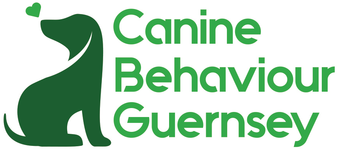
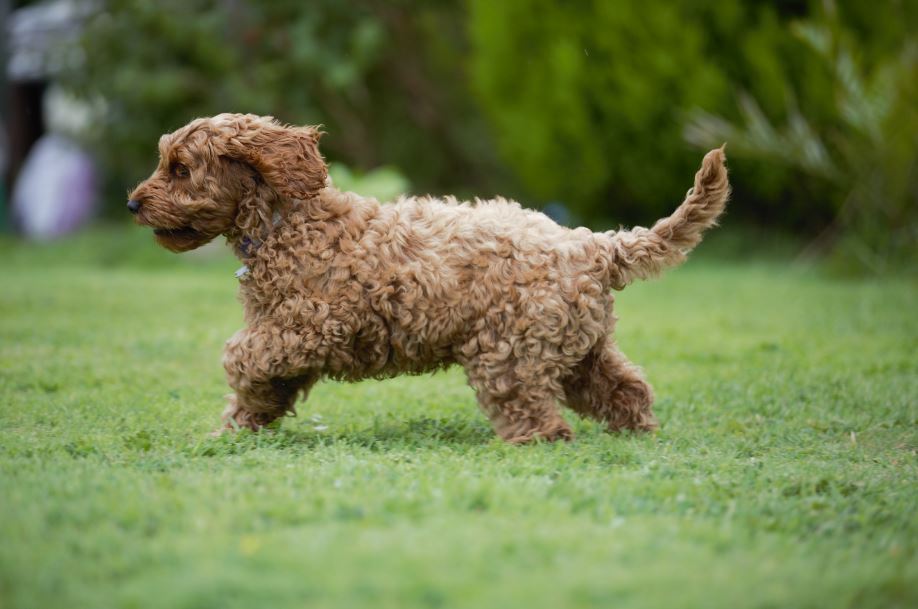

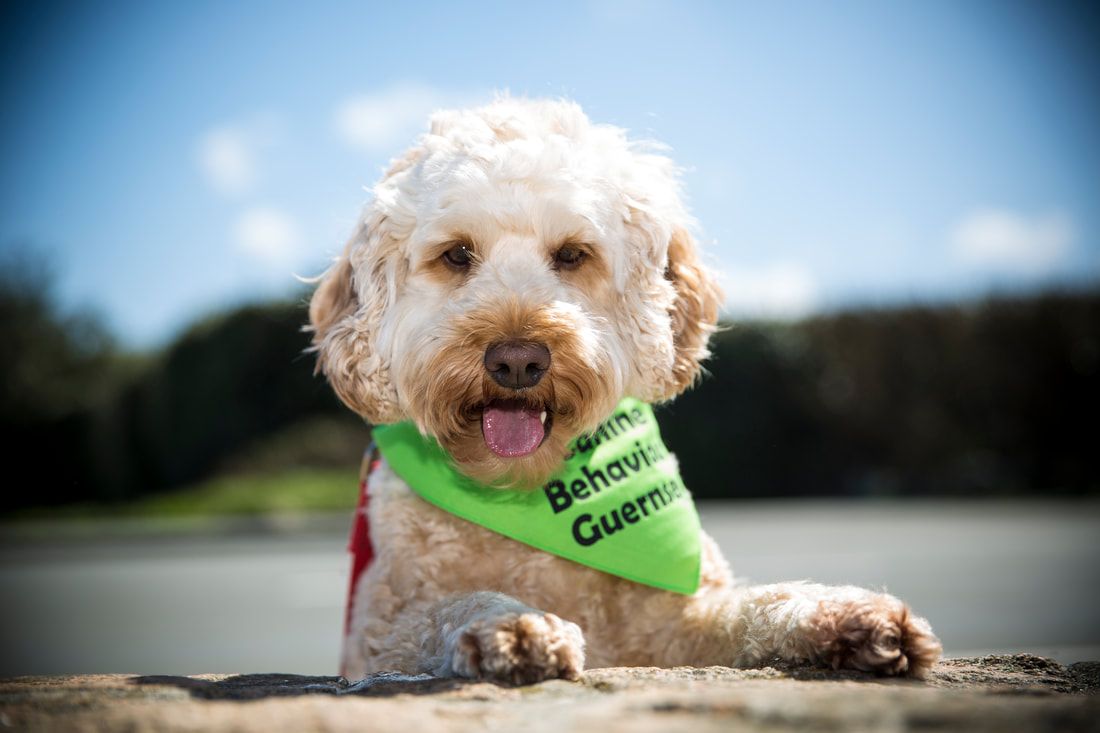
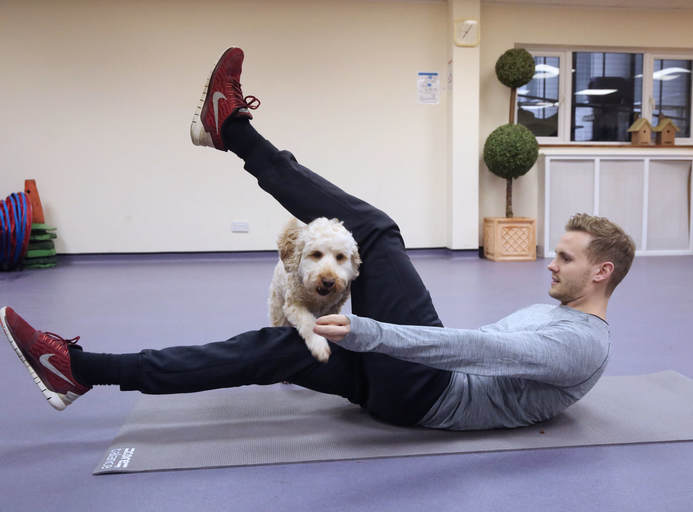
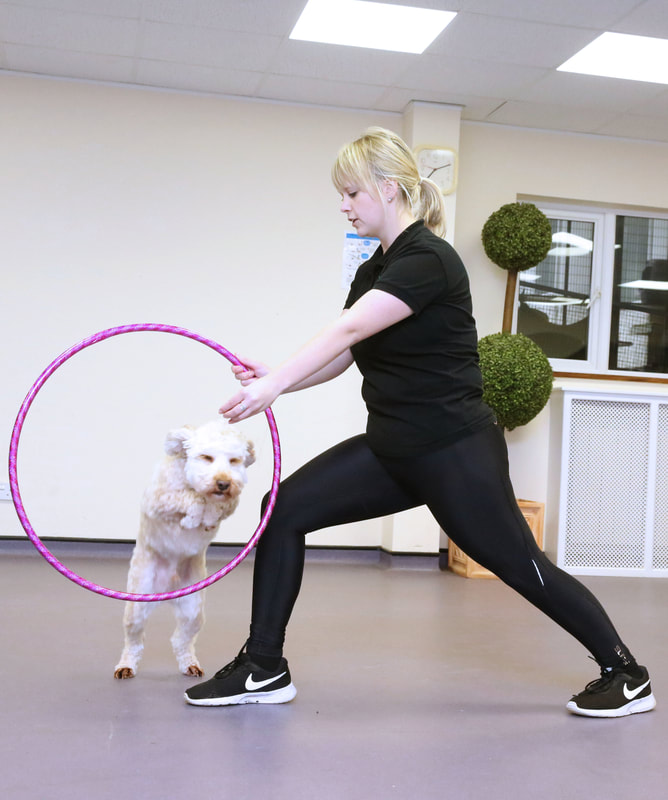

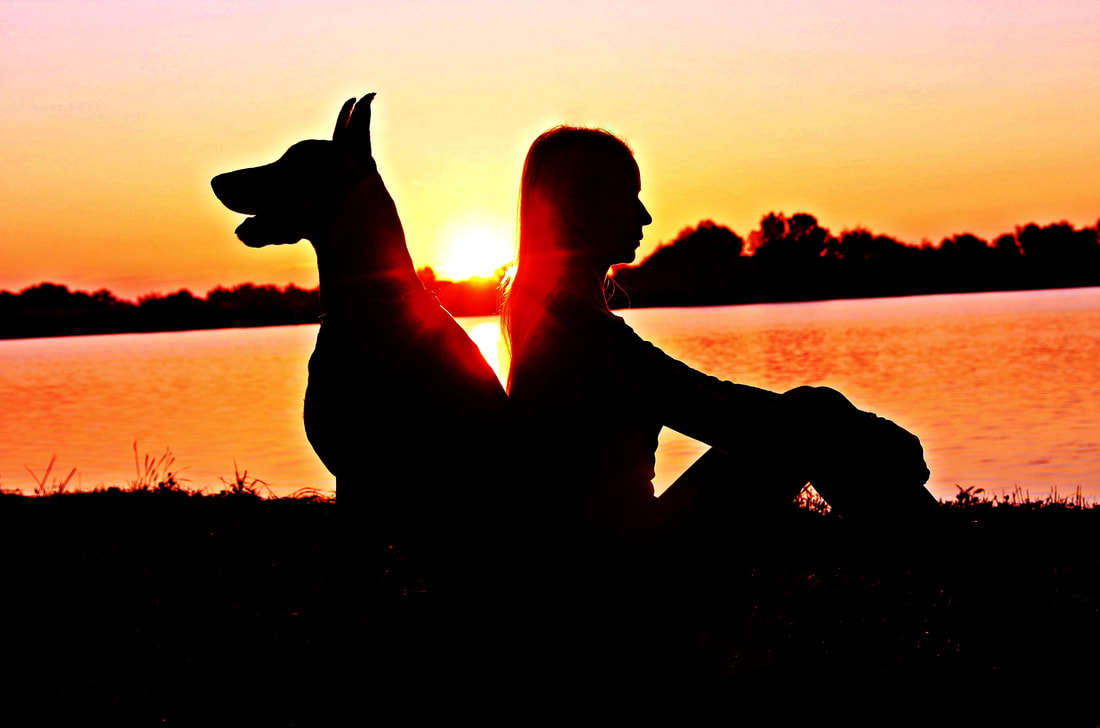

 RSS Feed
RSS Feed